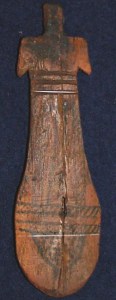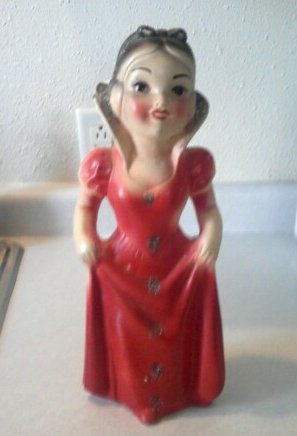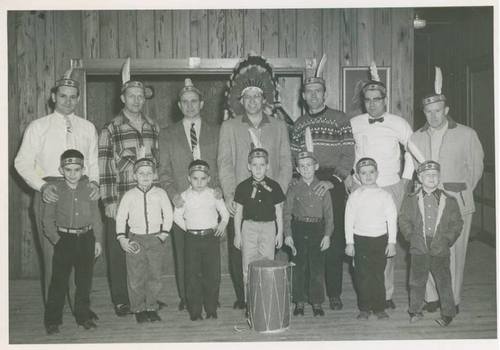A reader sent me an email requesting advice on establishing the value of some items. It’s not the first time the I, or any of the other writers here, has received an email or blog post comment of this sort; we have lots of folks asking us for help. (This despite the fact that our website, Inherited Values, clearly states: We won’t appraise or give you a value for your antiques and collectibles (it’s against our business values). We do, however, recommend using PriceMiner. You can learn more about appraisals here.
Typically, I respond that due to the volume of such requests, I cannot perform the work for free, and, if they are still interested, to please see my research service at my business site.
But this request was special…
Brenda in Greensboro wrote:
Hi! My 15 year old daughter is an avid Walter Farley reader. She recently bought a box of broken horse statues and old Walter Farley books. The dust jackets are not pristine but her copy of The Black Stallion and Satan is actually autographed! (She also ended up with an autographed copy of Sea Star by Marguerite Henry and the illustrator Wesley Dennis.) Can you advise us? She wanted an original copy but she’s nervous not knowing whether the copy she bought to read is better off sealed in plastic or sold to a collector. How do we go about establishing the value of this item? (Your article popped up while doing a search on the internet – hence the hope that you might be able to advise us.) Thanks for any help you can offer.
As a former horse-loving girl lady, I find this so exciting that I’m actually jealous!
I decided that a simple guide was long over due, and that I’d use Brenda’s daughter’s finds as the example.
It should be noted that these guide points are a quick version of what a person can do to get a little snap-shot version of an item’s value. I won’t go so far as to remind you to check with your physician before following any of this, but I will say that these are suggestions based on my own practices & experiences and as such they may be utterly meaningless to you. In other words, I’m just giving you ‘free advice’, and may be worth exactly what you paid for it. And I do hope others, sellers, columnists and you readers, will chime in with your own thoughts on this too.
Disclaimer out of the way, we will begin.
12 Key Points On The Subjective Matter Of ‘Should I Sell It..?’
1 Yes, these signed books are more valuable and so need to be cared for. This is true for many rare books, old books, out of print books, first editions, limited editions or runs, and any other case where number of available copies is less than the demand for them. It doesn’t mean she can’t read them now — but there will come a day when that simple act will have its risks with brittle pages, the oils of fingers damaging the signature, etc.
But there is more to value than the dollar value. I’ve written on this before many times, and this is what truly makes such evaluations of price so difficult. In this specific case I must also warn you of an all-too-familiar problem that nearly every adult faces…
2 I really, really regret giving away, & occasionally selling, (almost) all of my horse collectibles, books and figurines. You may think you’ve outgrown them, but then there you are one day, buying them all ‘back’ in some fashion or another. In this case, these books will not only have sentimental value of ‘horse books’ but also that of ‘discovery’.
3 And let’s face it, once your daughter is an adult these books will likely only have increased in value which means ‘buying them back’ will be much more expensive. (As long as the world keeps producing horse lovers, there will always be horse fans and collectors of all things horse.)
So as her Momma, I ask you to help counsel her in that regard — and yes, that may mean you’re to store the boxes until she’s moved into her own home where it’s now safe for her to unpack them or is prepared to properly store them herself.
4 But the bottom line of all of this is that pretty much anything we own has its price. We love our homes, our collections, our prized belongings, but if someone offered us the right amount… We’d at least consider selling. The trick here is to find out what the item is worth on the market today and see if that amount is your sell-out price (or greater). If not, you’ll want to keep it.
I can’t help you and your daughter with such a determination, but I can help you discover the ‘today’s market value’ part of the equation.
My parents wisely taught me that the value of any item is what a person is willing to pay for it. This is true for anything, including collectibles. This is most easily seen at an auction. In the case of popular items, the value is the highest price willing to be paid for it, and non-desirable items don’t sell at all (or must be thrown in a lot with other items just to get rid of it). This is why most folks suggest that you begin your search for finding an item’s value at eBay. (It may no longer be the biggest or the best for antiques & vintage; but you can easily see past listings & sales.)
5 First, you do searches for the exact same title that you have, both current listings and closed or completed auctions (the latter is where you’ll see the end results, all which were recently listed and with final price bid/paid – or no bids/sales at all). In the case of autographed books, repeat the search for other titles and items signed by the author. Again, both current listings and completed auctions. Search for ‘autographed’ and ‘signature’ too — and, if you’d like, misspellings of the author’s name. Given the rarity of any ite, you may need to repeat this search over a matter of a few weeks (or, save the search on eBay to be notified of new listings) to actually see matching or similar items.
6 Next, check book dealers, via Abe & Alibris for example, to see what they are asking. You can also use BookFinder to help with this. (Note that you can ‘toggle’ to search for a signed copy.) Generally, book dealer prices are higher than auction starting and closing prices as those sellers are willing to wait for their price. (This is also true of most antique shops, and these ‘higher prices’ are known as ‘retail prices’ rather than auction prices. While auction prices often make the news for huge bidding sale sums, the auction prices are completely dependent upon who has shown up to bid that day and are extremely volatile because of this.)
7 You can also check collector guides, but please note that these prices are generally perceived to be quite a bit higher than normal selling prices. Theories vary on why this is, but as a general rule, I consider the prices listed in collector books to be closer to insurance/replacement costs rather than reflective of the actual prices paid at auction or even retail.
8 With all your research you’ll likely notice a range of prices, even for items in relatively the same conditions. Popularity & price fluctuate, sometimes for no seen reason, other times, such as with conditions, it’s obvious to see why; but all of this will give you a ballpark. This is basically what an appraiser does, only they have enough experiences from which to draw from in terms of conditions, authenticity, and prices — and they have access to services & databases with recent sales information.
 9 Of course, all of this comes down to the validity of the signatures. This can be done online first, as there are sites with images of signatures. (For example, Ask Art for artist signatures, and Krueger Books has authors and some artists.) If it looks close to you, and your price research indicates a high enough value, then you might find it is worth having an appraiser verify and authenticate the signature for you. Some auction houses will include such authentication as part of their services. Having a certified or authenticated signature may cost you, but it will increase final price as buyers are more comfortable to bid/buy.
9 Of course, all of this comes down to the validity of the signatures. This can be done online first, as there are sites with images of signatures. (For example, Ask Art for artist signatures, and Krueger Books has authors and some artists.) If it looks close to you, and your price research indicates a high enough value, then you might find it is worth having an appraiser verify and authenticate the signature for you. Some auction houses will include such authentication as part of their services. Having a certified or authenticated signature may cost you, but it will increase final price as buyers are more comfortable to bid/buy.
10 As I mentioned auction houses, I should make a few more comments about them. Auction houses or auctioneers will have fees &/or take percentages of the sale of the item, just as eBay itself does; so that’s not a reason to avoid them. In fact, it may be worth getting your item in front of buyers who respect the reputation of auction professionals to the degree that the buyers will bid higher. Don’t be intimidated by auctioneers, especially if research indicated your item is worth $100 or more. (Some houses may have even higher limits, so as always, research wisely.)
11 So now you have an idea of the book’s worth on today’s market… But it’s still up to you and your daughter to decide if this is worth selling.
Is the money worth not having the book? Is it enough money to fund more treasure hunting? Or is the thought of what price she’d pay for a copy in 2020 or 2028 too scary to contemplate?
If it were me, and this column always comes back to ‘me’ in some fashion or other, I’d say she should keep all of the goodies she’s got. She can get cheap reading copies of the autographed books at thrift stores for chump-change, read them all she wants, and store the grand ones for that ‘someday’ in the future when she can regale her friends and family with the story of her discovery of such prized possessions.
12 Or she can send them to me. I’ll love them and take care of them well. Honest.

































































































